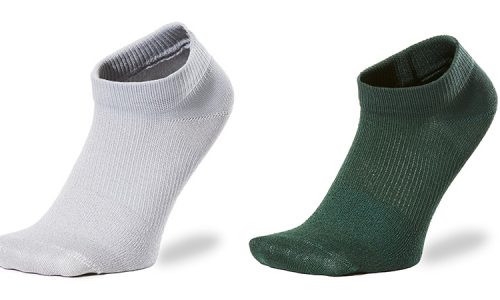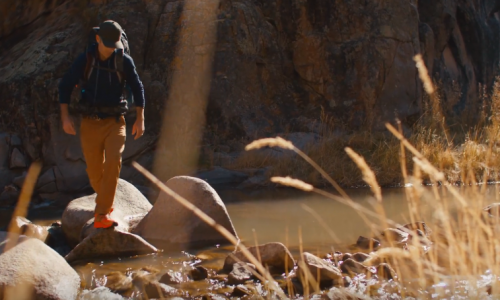Home » Gear Reviews » Running » Running Shoes » Trail Running Shoes » Cushioned & Protective Trail Running Shoes » Saucony Peregrine 7
Saucony Peregrine 7 Review
March 29, 2017













 88
88 The Good
- Outstanding turnover & responsiveness
- Very intuitive handling
- Excellent traction & protection
The Bad
- Narrow toebox
- Overbuilt heel cup
The Saucony Peregrine 6 was one of the best all-purpose trail shoes to hit the market this year. The Peregrine 7 is largely unchanged from the prior version, and retains the same outstanding combination of long-haul cushioning with the agility and responsiveness necessary for faster running.
While it is not necessarily best-in-class in any individual category, the Peregrine 7 has all of the features one would want in a general purpose trail shoe that can handle anything from a technical 10km up to a demanding ultramarathon. First and foremost, the Peregrine is an extremely comfortable shoe, and simply feels good on the feet. Fortunately this comfort does not come at the cost of turnover and responsiveness, both of which are excellent for a shoe in this weight class. The Peregrine also dances through technical terrain with ease, and has more than enough protection to absorb the occasional rock, root, or dirt clod. These are crucial characteristics for both hard-charging runners and those who are fatigued from having spent a day or more on their feet. Although the outsole lugs are smaller and less aggressive than previous versions of the Peregrine, traction was no less effective, and turnover was actually enhanced.
The Peregrine 7 has only a handful of drawbacks, and these are all likely to be dependent on runner preferences. The two most notable are the narrow toebox and the somewhat overbuilt heel cup. The former is more likely to be an actual problem than the latter. A third drawback is that the Peregrine can be almost too flexible at times, which can lead to both a loss of energy return on steep climbs and excessive foot fatigue over long distances.
The Peregrine 7 will appeal to a broad range of runners, from weekend warriors to competitive racers and even road runners who want to keep a pair of trail shoes in their closet. Heavier runners may have a bit of trouble with the Peregrine over long distances (marathon and up). Performance-oriented runners used to running in racing flats also might find the Peregrine to be a bit too flexible for their liking.
Comfort
The Peregrine is the type of shoe you feel like you could put on and wear all day long and forget that it’s there. The upper material conforms to the foot very well without any hotspots or irritating seams, and the midsole material is very soft and forgiving. The upper material is thin enough to breath well. Over longer distances, the flexibility of the shoe can lead to excessive foot fatigue, but this will eventually fade as the runner becomes more used to the shoe. One additional caveat is that the toebox is definitely on the narrow side.
Speed
The Peregrine 7 has excellent turnover for a shoe with a 4 mm drop and a weight of nearly 10 oz. Part of this is due to the overall balance of the shoe, which keeps a smooth even feel throughout the stride. The outsole lugs also are sufficiently low profile to allow for a smooth ride.
Security of Fit
Security of fit was generally excellent with no lock down issues, and despite the overall soft feel of the shoe underfoot. One peculiarity of the shoe is the width of the forefoot relative to the toebox and the midfoot: the forefoot is a bit wide, while the toebox and midfoot are both fairly narrow. The amount of taper necessary to bring these characteristics together could be problematic for runners with very straight feet.
Agility
The Peregrine definitely handles like a lighter weight shoe. What is more impressive is how intuitive the handling is. It immediately feels like a direct extension of your foot, and almost eliminates the need to think about foot placement. This feel is enabled by the fairly narrow toebox and the low heel-to-toe drop, both of which help keep the shoe out of the way on technical terrain.
Responsiveness
Given the overall softness of the Peregrine, one would expect it to be lacking in responsiveness. Fortunately that is not the case, and the Peregrine responds nicely to higher speeds on flats, runnable climbs, and downhills. The flexibility of the Peregrine does make it a little less efficient when power hiking steep terrain.
Protection
Between the full-length outsole and rock plate, push through protection is quite excellent. The upper is a little less protective due to the thinness of the material, and the toe bumper also is a little lacking. However, both are fairly typical for shoes in this weight class and will be more than adequate for nearly all on-trail conditions.
A competitive road cyclist in his younger years and lifelong outdoor enthusiast, Jacob discovered his love for long distance trail running as an adult. He lives in the foothills of the Sangre de Cristo Mountains in Santa Fe. Follow him at Google+.




















